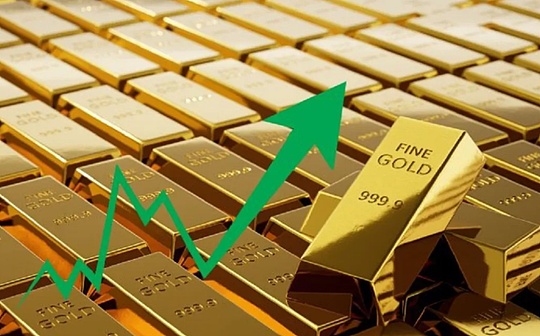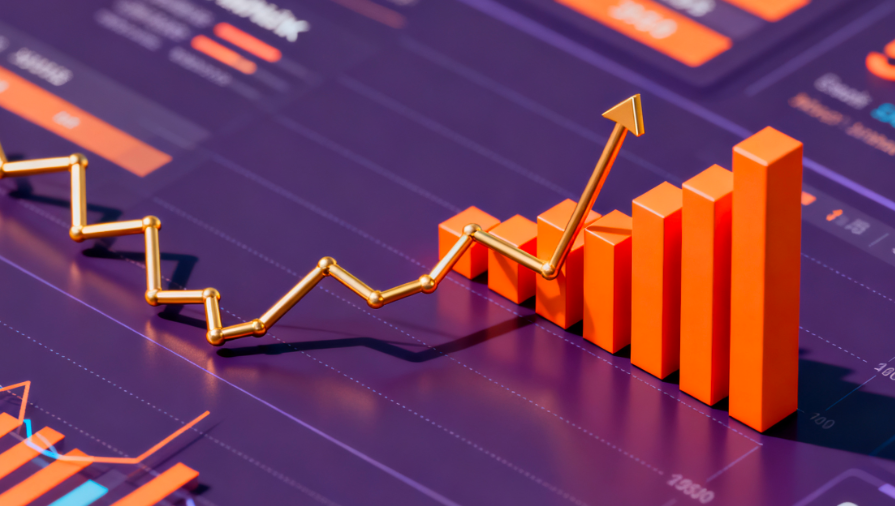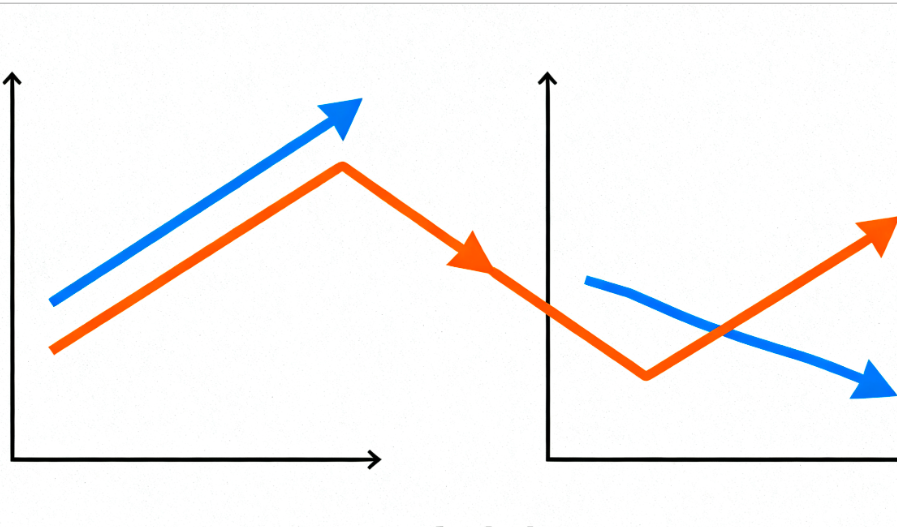
Lately, have you noticed more people around you discussing "gold"?
Yes, I'm referring to physical gold in the literal sense. Amid rising geopolitical risks and global macroeconomic uncertainty, the total market capitalization of gold (once) surpassed $30 trillion, firmly securing its position as the world's top asset.
Simultaneously, something quite interesting is happening in the Crypto world. Beyond Bitcoin, widely regarded as "digital gold," physical gold itself is accelerating its on-chain presence. Tokenized gold, represented by tokens like Tether Gold (XAUT), is gaining new capabilities through the Real-World Assets (RWA) wave – becoming divisible, programmable, and even yield-bearing.
It is challenging a long-standing narrative that Bitcoin has almost monopolized: "Who is the true digital gold?"
BTC: The Evolving Narrative Over a Decade
Is BTC primarily a currency or an asset? Is its core function payment or store of value? Or is it a risk asset akin to tech stocks?
This question has permeated almost the entire history of Bitcoin since its birth in 2009.
Although Satoshi Nakamoto clearly defined BTC's "Electronic Cash"属性 in the whitepaper, as its scale evolved, this narrative has undergone several reversals and sparked continuous community debate over the past decade – shifting from an early payment method to "store of value" and "alternative asset."
Particularly, the approval of spot ETFs in 2024 became a narrative turning point. More people no longer view Bitcoin favorably as a "global currency" for transactions and payments. Instead, a growing number are starting to see Bitcoin as a store-of-value asset with a consensus foundation – namely, "digital gold":
Like gold, it has scarce total supply and predictable, stable production, but simultaneously possesses advantages gold cannot match: better divisibility (1 satoshi = 0.00000001 BTC), portability (cross-border, near-instant transfer), and liquidity (24/7 market).
Precisely because of this, Bitcoin is gradually becoming the third global store-of-value logic within the macro monetary system, following the US Dollar and gold.
According to companiesmarketcap statistics, among the current global Top 10 assets, gold holds an absolute leading position. Its total market cap ($28.4T) far exceeds the combined value of the next 9 ($26T).
Consider this: even if BTC reaches $100,000, its total market cap would only be about $2 trillion, merely equivalent to roughly 1/15th of gold's total market value. This is precisely the underlying motivation for the BTC community's persistent emphasis on the "digital gold" narrative – targeting the largest and oldest store-of-value asset in the traditional financial world.
However, interestingly, while BTC strives to align with the "digital gold" narrative, gold itself is also being "digitized."
The most direct catalyst is the combination of record highs for physical gold in the real world and this year's RWA wave, which has led to the rapid rise of tokenized gold represented by Tether Gold (XAUT) and PAX Gold (PAXG).
Since they are pegged to physical gold, with each issued token backed by an equivalent amount of physical gold reserves, these "digitized gold" products undoubtedly represent a new financial species for both the Crypto and TradFi fields.
The "Surprise Rise" of the Gold RWA Wave
Actually, using the term "surprise rise" might not be entirely accurate for tokenized gold.
Strictly speaking, neither the currently largest XAUT nor the following PAXG are newly launched, viral products. Instead, the current RWA wave and macro market conditions have endowed them with new strategic significance and market attention.
Taking XAUT as an example, its early origins can be traced back to the end of 2019. At that time, Bitfinex and Tether CTO Paolo Ardoino revealed that Tether was planning to launch a gold-backed stablecoin product, Tether Gold. The XAUT whitepaper was publicly released on January 28, 2022.
The whitepaper explicitly states that each XAUT token represents ownership of one troy ounce of physical gold. Tether guarantees that it holds physical reserve gold corresponding to the issued quantity, all stored in "a Swiss vault with top-tier security."
At the time of writing, the total issuance of XAUT has exceeded $1.55 billion, representing physical reserves of approximately 966 gold bars (totaling 11,693.4 kilograms).
In fact, within Tether Gold's whitepaper, we can see its clear positioning of its own advantages:
-
Compared to physical gold, the "gold stablecoin" can divide the hard-to-divide precious metal into smaller denominations, making it more portable and significantly lowering the investment threshold for individuals.
-
Compared to Gold ETFs, it enables 24/7 trading of the asset, has no custody fees, and greatly improves the speed and efficiency of asset transfer.
That is, Tether Gold believes it can help users own the underlying anchored gold while also obtaining high liquidity and divisibility.
In other words, tokenization grants real gold the "digital attributes" unique to BTC, allowing it to be fully absorbed into the digital world for the first time, becoming an asset unit that can flow freely, be combined, and calculated. It is this step that makes tokenized gold products like XAUT no longer merely "gold certificates on-chain," but opens up vast possibilities on-chain.
Of course, this trend also prompts the market to reconsider: When both gold and BTC become on-chain assets, is their relationship competitive or symbiotic?
Deliberation on Tokenized Gold vs. Digital Gold
Overall, if the core narrative of BTC is "scarce consensus created within the digital world," then the key difference for tokenized gold (XAUT/PAXG) lies in "introducing scarce consensus into the digital world."
This is a subtle but fundamental difference. BTC creates trust entirely from scratch (trustless), whereas tokenized gold digitizes the traditional structure of trust. As CZ recently tweeted pointedly:
"Tokenized gold is not actually on-chain gold. It's based on trusting the issuer's ability to fulfill. Even in extreme cases, like management change or war, you still rely on that trust structure continuing."
This statement highlights the fundamental difference between tokenized gold and Bitcoin: Bitcoin's trust is based on algorithmic consensus, with no issuer or custodian involved. But the trust in tokenized gold is based on institutional credit – requiring belief that Tether or Paxos will strictly adhere to their reserve commitments.
This also means that Bitcoin is a product of being "trustless," while tokenized gold is an extension of "re-trusting."
Of course, if we look purely from the perspective of added asset value dimensions: In the traditional financial system, gold's core value lies in hedging and preserving value. But in the blockchain context, tokenized gold, for the first time, possesses programmability:
-
It can be used as collateral in DeFi protocols on platforms like Aave and Compound to borrow stablecoins for leverage or yield management.
-
It can be integrated into smart contract logic, becoming yield-bearing gold, potentially enabling gold to generate interest.
-
It can flow freely between different networks via cross-chain bridges, becoming a stable, liquid asset in multi-chain ecosystems.
The essence of this change is the transformation of gold from a static store of value into a dynamic financial unit. Tokenization technology endows gold with Bitcoin-like digital attributes – verifiable, liquid, composable, calculable. This means gold is finally no longer just a symbolic value sitting in a vault but has become a "live asset" within the on-chain world that can participate in generating yield and credit.
Objectively speaking, in the current environment of tightening liquidity and疲软的 Alt assets, the rise of the RWA wave is bringing traditional assets like gold, bonds, and stocks back into the crypto spotlight. The popularity of tokenized gold precisely indicates that the market is seeking a more robust and certain on-chain value anchor.
From this perspective, tokenized gold, accelerating its development under the RWA wave, does not aim to (and likely cannot) replace BTC. Instead, it serves as a perfect complement to BTC's "digital gold" narrative, becoming a new financial species that combines the efficient liquidity of digital assets with the hedging certainty of traditional gold.
















